“So I want you to know, Barack, that you’ll always be a welcome guest in Israel.”
Prime Minister Benjamin Netanyahu is speaking with President Obama at the Lotte New York Palace Hotel, a few blocks from Rockefeller Center and the Waldorf Astoria Hotel in Manhattan.
The Prime Minister continues: “And, by the way, I don’t play golf, but right next to my home in Caesarea, in Israel, is a terrific golf course.”
It’s true that Caesarea, an ancient Roman port that’s now a high-income suburb, is known for its golf greens. But caddies aren’t the Prime Minister’s only neighbors.
The day before the exchange at the Lotte New York Palace Hotel, Khalid Jurban is dripping as he steps out of the ocean. He shakes the worn plastic crate and ten skinny fish slip around the bottom.
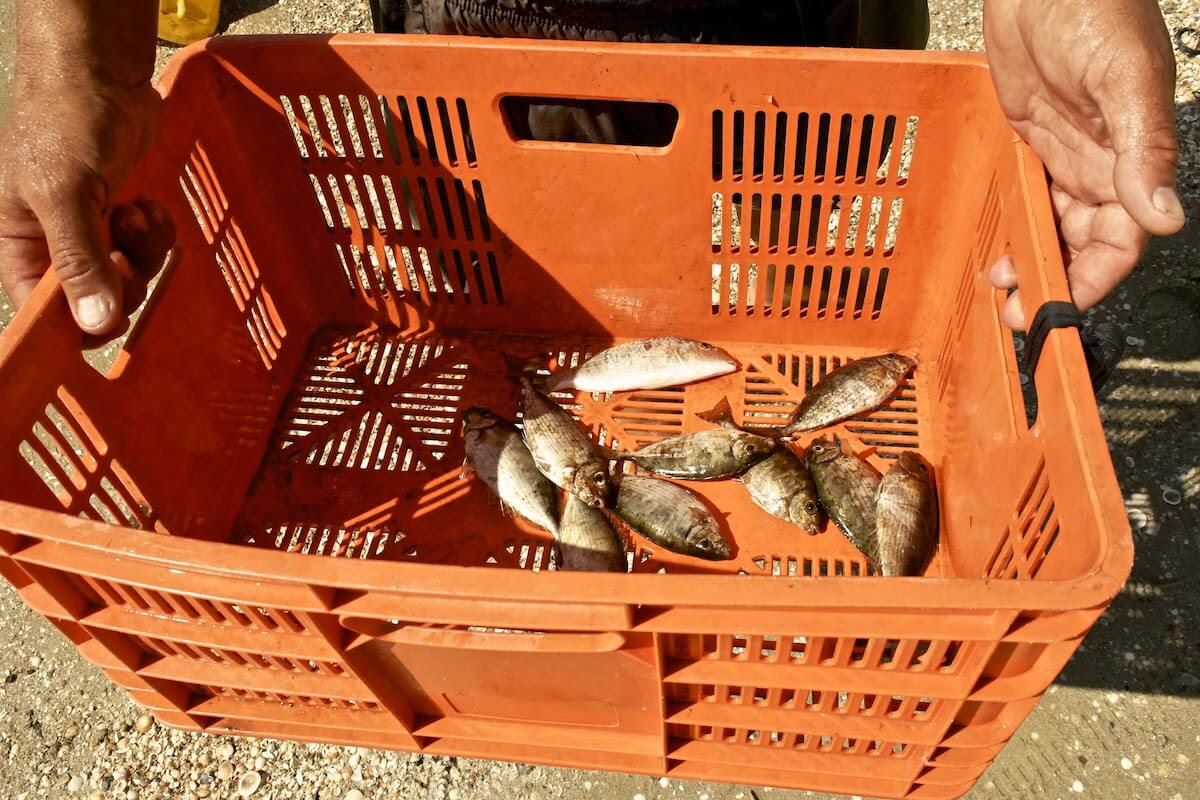
“Look,” he says, his dreadlock-framed face showing exasperation. Today’s catch is too small to sell. Khalid dumps the fish from the crate, rinses them and sets them on the barbecue. Before going off to shower, he turns.
“Have you seen Netanyahu’s house?” he asks, jokingly. “See? Here there are Palestinians and Israelis living right beside.”
Khalid is a fisherman in Jisr al-Zarqa, the only town on the coast of Israel today with an entirely Arab population. But despite being on the Mediterranean, Jisr al-Zarqa is trapped. Fourteen thousand residents occupy a little 1.5 square kilometer strip of coastline, pushed up against the sea by Highway 2. The town is squeezed by a kibbutz from the north and by Caesarea from the south. A few hundred meters away from luxurious Caesarea and Prime Minister Netanyahu’s private residence, 80 percent of families in Jisr al-Zarqa are living below the poverty line.
Khalid and his neighbors eat the day’s catch with toasted Arab pita and briny olives at a wood picnic table, just off the beach. The row of beachside homes that comprise the fishermen’s quarter of Jisr al-Zarqa – qariya al-saeediin – is a mix of old stone and sheet metal structures. The houses are solid. The fishermen are quick to point out the stark contrast between their homes and that of Prime Minister Netanyahu.
Jisr al-Zarqa is another world. The average income in Jisr al-Zarqa is half of the Israeli average and at least one third of the town’s residents are unemployed. It has some of the highest crime rates in the country. The primary entrance to the town is a tunnel under Highway 2, originally built to carry water, not cars. A mural decorates the outside entrance to the tunnel. There is a dove, a sunset, calming waves and a sign that warns incoming traffic of a 3.8-meter height limit.
After lunch, Khalid sits inside on a wood stool. He weaves a long, black rope through the edge of yard after yard of turquoise fishing net. His teenage son, Jamal, comes and goes, feeding scraps to the dog outside. Jamal’s bleached dreadlocks match his father’s. But neither Khalid nor Jamal expresses any hope or desire for the teenager to work as a fisherman himself.
Fishing was once a reliable source of income in Jisr al-Zarqa. Over the past thirty years, the lifestyle of Khalid and his fellow fishermen has become a struggle against declining fish stocks and dropping prices.
“There are so few fish, many fishermen have gone outside [the village] for other work,” says Musa Jurban, one of Khalid’s neighbors.
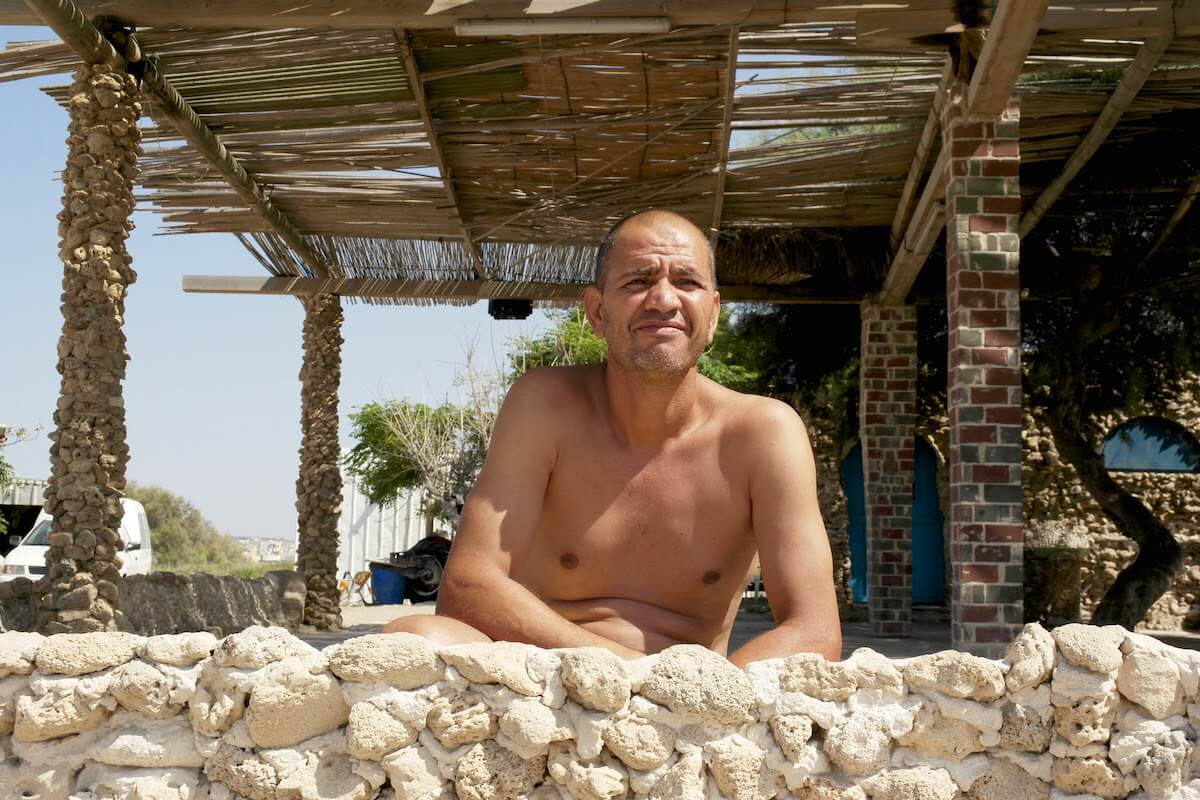
The Local Council of Jisr al-Zarqa cites increasing pollution, overfishing by larger commercial vessels and disruptions to the marine habitat as the chief reasons behind the declining fish population.
Residents of Jisr al-Zarqa now mostly look inland for work. Given the physical borders of Caesarea, Kibbutz Maagan Michael and Highway two, however, there isn’t much room for economic growth inside the village.
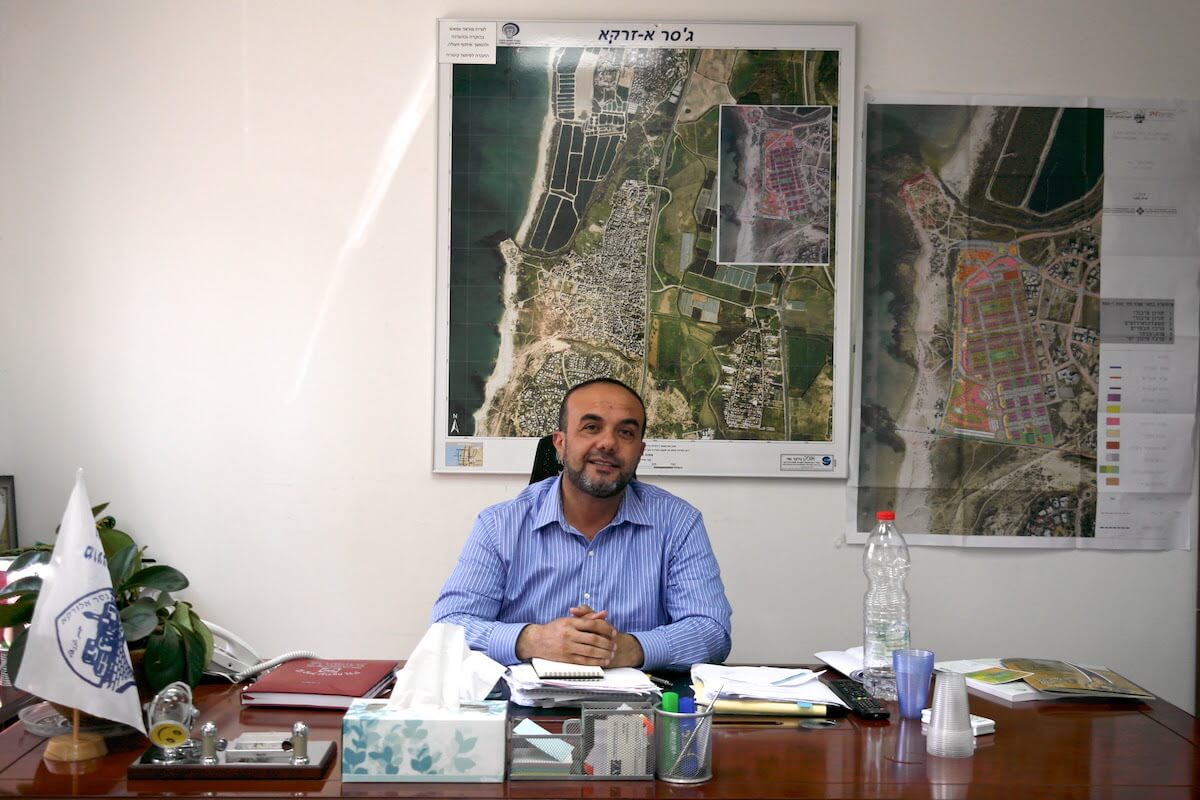
“For normal living, we need to double the size of the village,” says Jisr al-Zarqa mayor Morad Amash. He sits in an office in a simple compound, a five-minute walk from the beach.
Master plans for the town have been continually stopped by bureaucracy and funding problems. Outside planners also often fail to consult with the community. One plan which Amash sees as less-than-viable recommends shifting the highway slightly east – an extremely costly project and exceptionally short-sighted, given the town’s high growth rate.
“The government talks about distributing 700 million shekels to build public buildings, but if I get even 7 million shekels, where will I build?” says Amash.
The Mayor describes the resulting morning routine: at 5 A.M., twenty to thirty buses arrive in the middle of town to carry workers to Tel Aviv, Haifa and economic centers outside the village. Public transportation only reached the town three years ago. Now, the majority of commuters are women – Jisr al-Zarqa is one of the main sources of women for menial labor in the region’s hospitals and universities. No one mentions whether anybody is commuting to the golf courses in Caesarea.
Amash is blunt about his views on the contrast between Jisr al-Zarqa and their neighbors. On the south edge of town, a long, earth barrier separates Jisr al-Zarqa from Caesarea.
“Nine meters high,” says Amash, in clear and deliberate English. “The goal was to prevent the rich of Caesarea from seeing the poverty. Instead of helping to improve the situation, they choose to build a wall.”
The Caesarea Development Corporation supposedly built the barrier to block out noise, including the sound of calls to prayer from mosques in Jisr al-Zarqa. The barrier also marks a line between “haves” and “have-nots”: in terms of opportunities, resources and even life expectancy.
Jisr al-Zarqa has one of the lowest life expectancies in the country. Says Amash, “In Israel, they started to pay pensions beginning at age 67, but here, people don’t live to be 59.”
The situation for youth in Jisr al-Zarqa is not much better. Fifteen percent of students passed the high school exit exam this year, and the percentage is dropping. Last year 23 percent passed, and the year before it was 26 percent.
Jisr al-Zarqa hasn’t always been cut off from the land around it. Current residents trace their heritage to the Ghawarnah tribe, from the Jordan Valley. These Ghawarnah Arabs were farmers, working the swampy land that is now Kibbutz Maagan Michael and keeping herds of camels and oxen. On maps from the Ottoman Empire, the area was labeled al-Arab al-Ghawarnii for its residents.
During the years of the Ottoman Empire and the British Mandate, there were seven grain mills, or tawahiin, lining the river on Jisr al-Zarqa’s northern border.
“The river was crystal blue,” says Ghanem Yaacoubi, a consultant for the Mayor’s Office. “Farmers would come to grind wheat. Someone would ask, ‘Where are you going?’ and one would say, ‘To the bridge over the blue water.’”
The town came to be known as Jisr al-Zarqa – “The Bridge Over the Blue,” roughly. The river is now known as Nahr Taninim, the Crocodile River.
When Jewish settlers began to arrive, they needed al-Arab al-Ghawarnii to work the land, to dry up the swamps.
Says Amash, “The people here, they became a little like slaves. That’s one of the reasons that Jisr al-Zarqa stayed [through 1948].”
The Arabs made ideal laborers in part because they showed resistance to organisms and diseases living in the swamps.
“They learned to protect themselves, to take mud from the swamps and cover their skin,” says Yaacoubi.
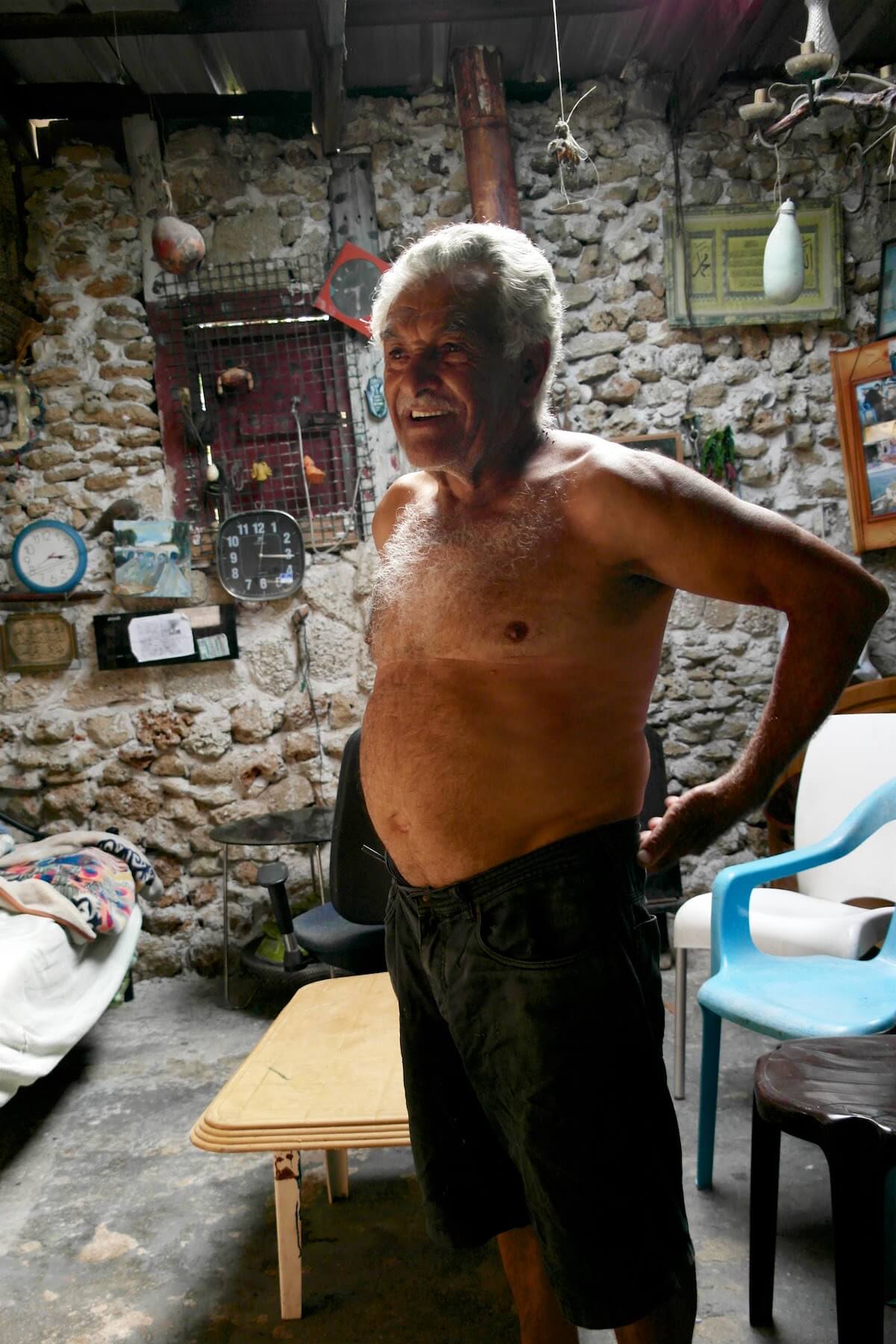
Today, Khalil Jurban is one of the oldest fishermen in Jisr Al-Zarqa. He claims that, while it may not make much money, a life in the boats and on the beach has made him stronger.
He no longer goes out to fish. Instead, he prepares nets for Musa, Khalid and others, taking weeks to weave a rope through 400 or 500 meters of net and to attach metal weights and buoys. Khalid and Musa will set their nets out at night, dropping them around sunset, and return just before dawn to haul them in.
“People still come in the morning to the beach, at seven or eight, from Tel Aviv, Caesarea, everywhere, to buy the fish,” says Musa.
Despite the challenges facing the village, the fishermen of Jisr al-Zarqa maintain a sense of pride. The sentiment is similar up in the Mayor’s office. Left without too many other options, Amash does his best to keep up hope.
Skylar Lindsay
Skylar Lindsay is a writer and photographer publishing on social justice, travel, food, and human rights issues. A Seattle native, he studied Peace & Conflict at Colgate University. Read his latest work at here. @SkylarLindsay.

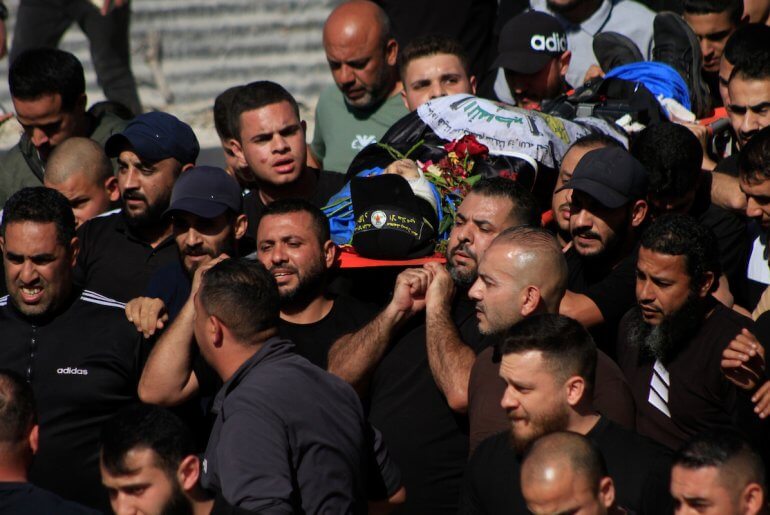
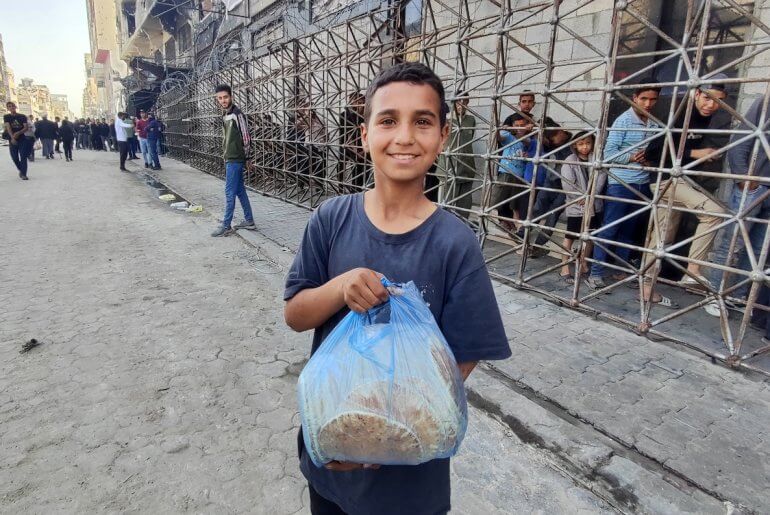
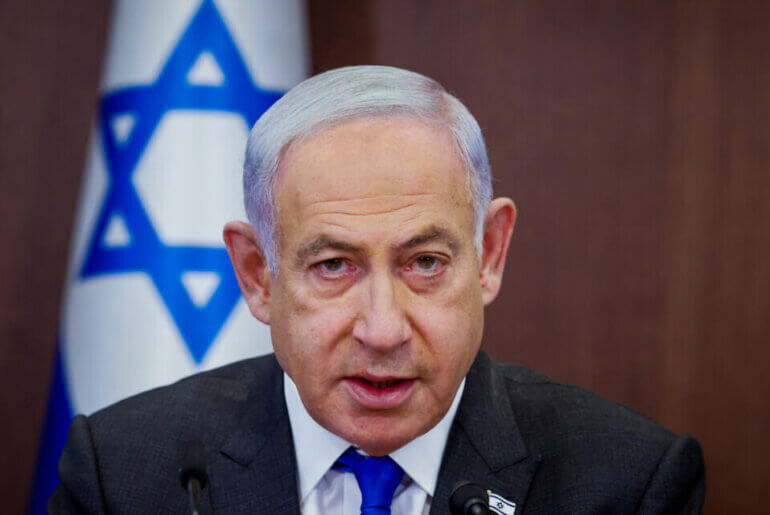
Maybe things in Jisr aren’t as bad as Skylar makes them out to be.
http://www.timesofisrael.com/overlooked-arab-israeli-beach-town-opens-its-doors-to-tourists/
Since half of the town’s residents are children, the good people of Jisr al Zirkah might have been able to raise their standard of living by having less children.
Oh. BTW Skylar, the Ghawarnah tribe, like many Palestinians emigrated from Egypt during the mid 1800’s.
Didn’t you know that?
“How gross I am? Gross enough to have had two kids and shown some restraint afterwards” –
Yeah, Mr. Scrooge, let ’em take advantage of all those prisons and workhouses too!
Khalid
green grows the lily right among the bushes
https://youtu.be/-mjWhMn-VnU